A comprehensive guide to purchasing one of the most common machines for cutting and mowing uncultivated grass, the tractor-mounted flail mower.
The Complete Guide to help you choose the Best Tractor Flail Mower
by the Real Experts of Garden Machinery
CONTENTS
1. Introduction
The tractor flail mower is the classic tool used by all farmers and hobby users who need to remove wild herbs, plant debris and brambles from fields, olive groves or vineyards. The flail mower, operated by the tractor, is able to cut and shred any vegetable residue, even when it is deeply rooted in the ground, resulting in a clean and homogeneous field. Plant debris will be shredded after the machine passes over them and, as they decompose, will become a useful fertiliser for the soil.
The flail mower is therefore a very widespread agricultural machine which is connected to the tractor via the standard cardan shaft and three-point hitch. There are many models depending on the intended use and this Purchasing Guide will lead you to the best tractor flail mower for your working needs.
First of all, it is good to mention that there are 2 main features of tractor flail mowers:
- ROBUSTNESS
- CONNECTION TO THE TRACTOR

Flail mower – Light 
Flail mower – Medium 
Flail mower – Heavy
These characteristics are strictly related to each other. In short, we can say that small, low-powered tractors are ideal for light and medium series flail mowers (NOT HEAVY), while a high-powered tractor will be ideal for heavy series flail mowers (A LARGE TRACTOR WOULD DAMAGE A LIGHT FLAIL MOWER).

Light series flail mower with 20/30 HP tractor 
Medium series flail mower with 35/45 HP tractor 
Heavy series flail mower with 50/80 HP tractor
2. Robustness of the tractor flail mower
Here is a classification based on robustness, which defines the different models and thus the various flail mower series:
- Light series
- Medium/light series
- Medium series
- Medium/heavy series
- Heavy series
| Vine shoots diameter | Grass height | Working speed | |
| Light series | 20 mm | 100 mm | 2 km/h |
| Medium/light series | 30 mm | 115 mm | 2.9 km/h |
| Medium series | 40 mm | 130 mm | 3.5 km/h |
| Medium/Heavy series | 50 mm | 150 mm | 4.4 km/h |
| Heavy series | 60 mm | 170 mm | 5 km/h |

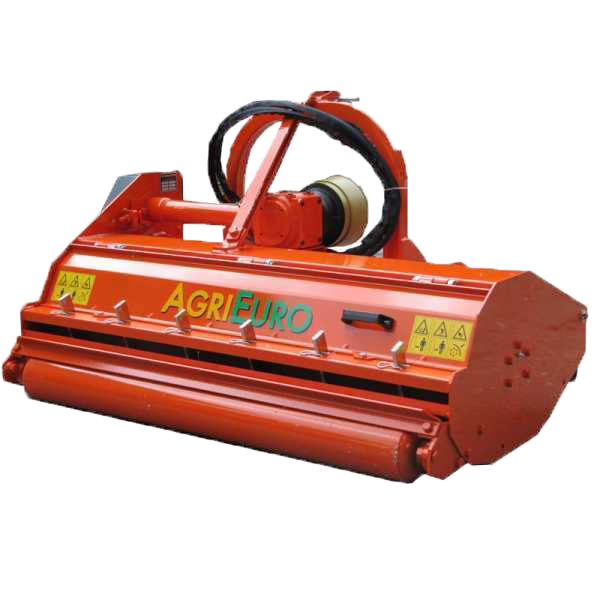
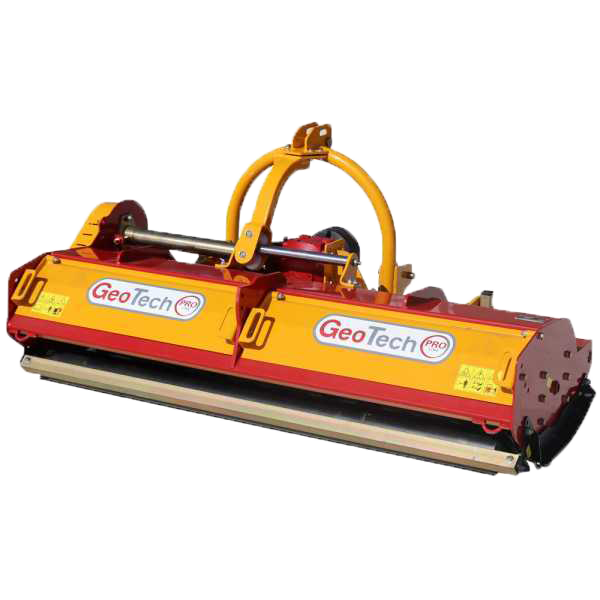

- The robustness is an essential feature for sorting out the various models. Why is it important in assessing the diameter of branches that can be shredded? In a heavy series flail mower, ALL COMPONENTS are charaterised by a sturdier structure and can therefore process larger branches or plant residues more easily. A heavy series flail mower will therefore be able to work with grass, pruning, straw, brambles, undergrowth, etc.
The robustness is determined by the thickness of the steels that make up the tool, the dimensions of the hammers, the size of the bolts, the transmission and the number of belts (more on this later).
The heavy structure allows it to withstand the vibrations and stresses that the machine undergoes when shredding prunings and large vegetable residues.
- The grass height is linked to the width of the flail mower frame. A heavy series machine is larger in size and therefore features a wider frame which allows it to process larger amounts of grass.
A flail mower equipped with a wider frame can collect, process and dispose of larger masses of grass more efficiently.
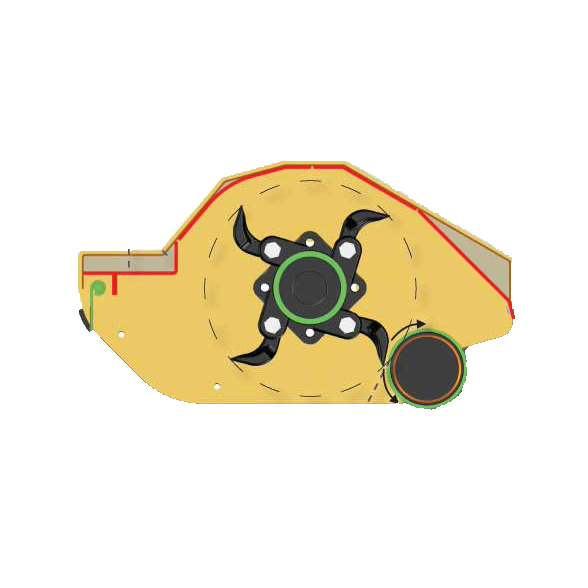
Light series flail mower frame width 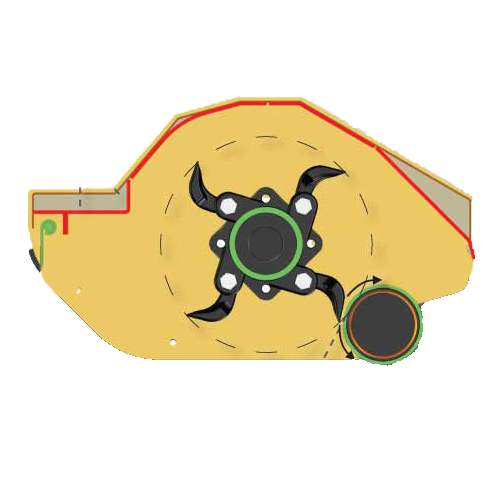
Medium series flail mower frame width 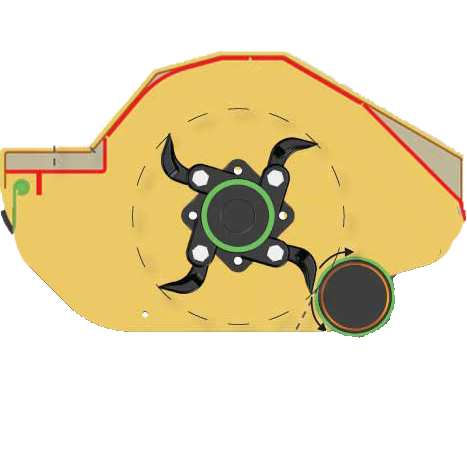
Heavy series flail mower frame width
- The working speed depends on the other variables. Under the same conditions, a heavy series flail mower is able to work faster and therefore provide a higher hourly output. With grass of around 130 cm in height, it is clear that a medium/light series flail mower is at its limit, but a heavy series flail mower can work in a more ” effortless” manner, as its frame can collect more grass than it can handle.
A heavy series flail mower features a higher speed and therefore has a greater impact on stones and branches, but it manages to absorb the blows more effectively.
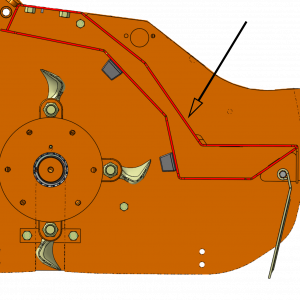
- The double skin frame is another key feature of tractor flail mowers. This characteristic can be found on heavy series flail mowers and consists of a double frame. The two steel sections are placed on top of each other making the machine twice as strong as a standard frame flail mower. This makes the flail mower with double skin frame truly impact-resistant, even in extreme conditions. It is hard-wearing in the presence of stones (but not too large: the best advice is always to work without stones), shrubs, scrubs and undergrowth with good diameter branches.
- The rotor, and therefore the thickness of the steel from which it is made, also determines the robustness of the flail mower. In this respect, we can make the following classification:
– 50 mm rotor for light series flail mowers
– 60 mm rotor for medium series flail mowers
– 80-100 mm rotor for heavy series flail mowers
| Rotor diameter | |
| Flail mower – light series | 50 mm |
| Flail mower – medium series | 60 mm |
| Flail mower – heavy series | 80 – 100 mm |
- The thickness of the rotor not only affects its robustness, of course, but also its kinetic force: a thicker rotor will create more resistance when starting the machine, but then it will be more difficult to slow it down.
- In addition, the robustness of the rotor also affects the risk of damage to it as a result of impacts with foreign objects (such as large stones or stumps hidden in the tall grass): it is good to know that replacing the rotor is a major expense. The thicker the rotor itself, the less risk there is of it being damaged.

3. The shift
Tractor flail mowers can be divided into:
- flail mower with fixed connection
- flail mower with manual shift
- flail mower with hydraulic shift

Ceccato flail mower with fixed connection 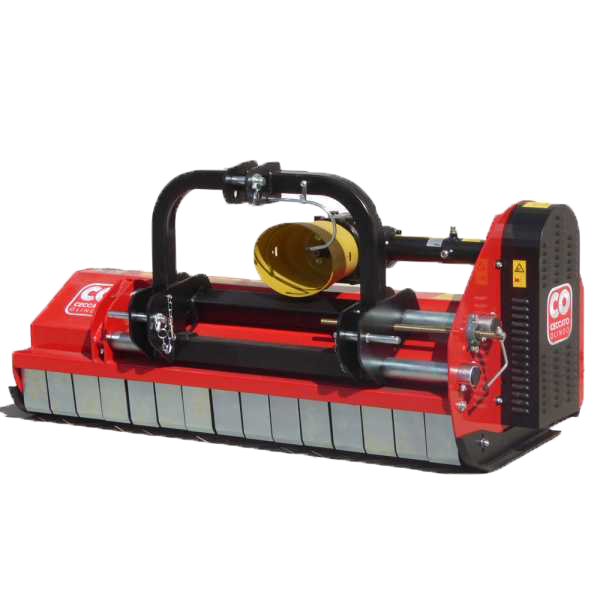
Ceccato flail mower with manual shift 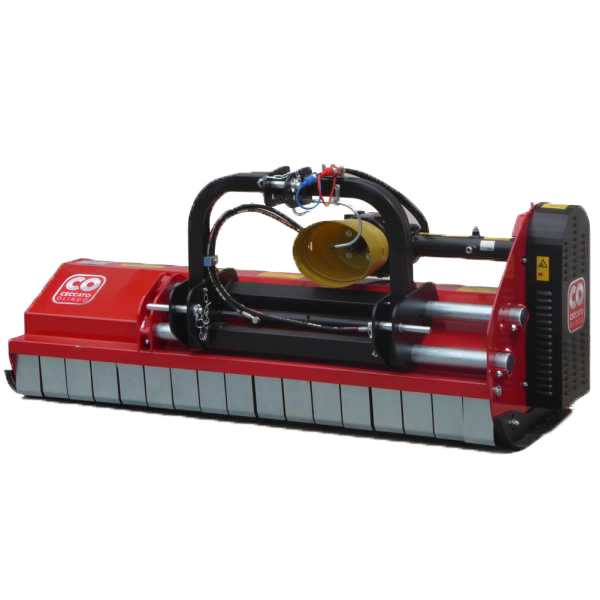
Ceccato flail mower with hydraulic shift
Flail mowers equipped with shift, whether manual or hydraulic, have a significant advantage of around 35-45 cm.
They have the characteristic of overhanging the rear wheels of the tractor, reaching working widths of 60-70 cm. The protruding sides of the flail mowers allow them to get closer to trees, resulting in better pruning and care of field edges and hedges.
The flail mowers with shift provide superior maneuverability. One example of this is the shredding work in olive groves: the shift allows to stay further away from the tree tops and closer to the trunks.
Between a flail mower with manual shift and one with hydraulic shift, we would always recommend the hydraulic type: for a fair price there is a much greater convenience (no need to get out of the tractor, remove the pin to move the flail mower). Of course, a flail mower with hydraulic shift can only be used if you own a tractor that can support this feature, and is therefore equipped with the hydraulic system.
4. Cutting tools
There are 3 different types of cutting tools for flail mowers:
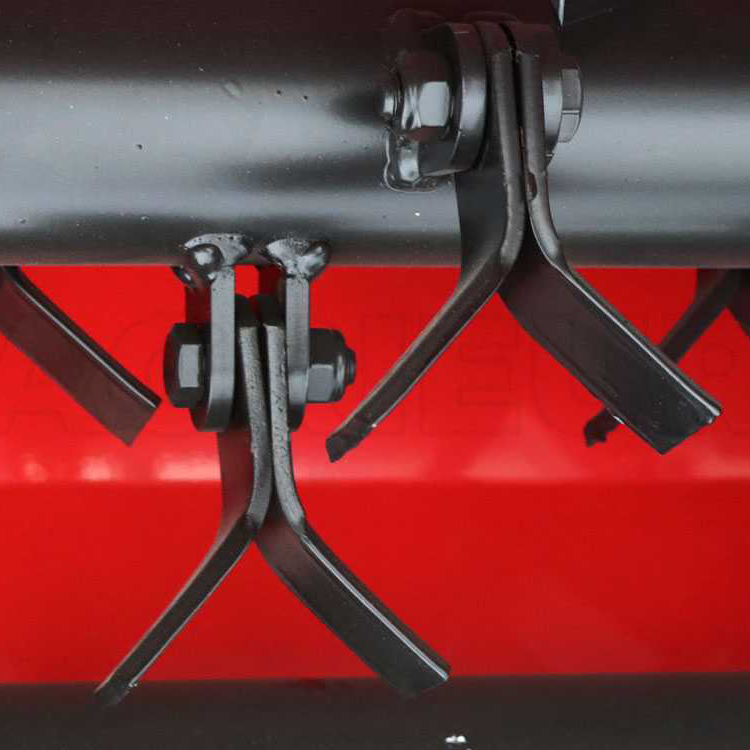
Knives 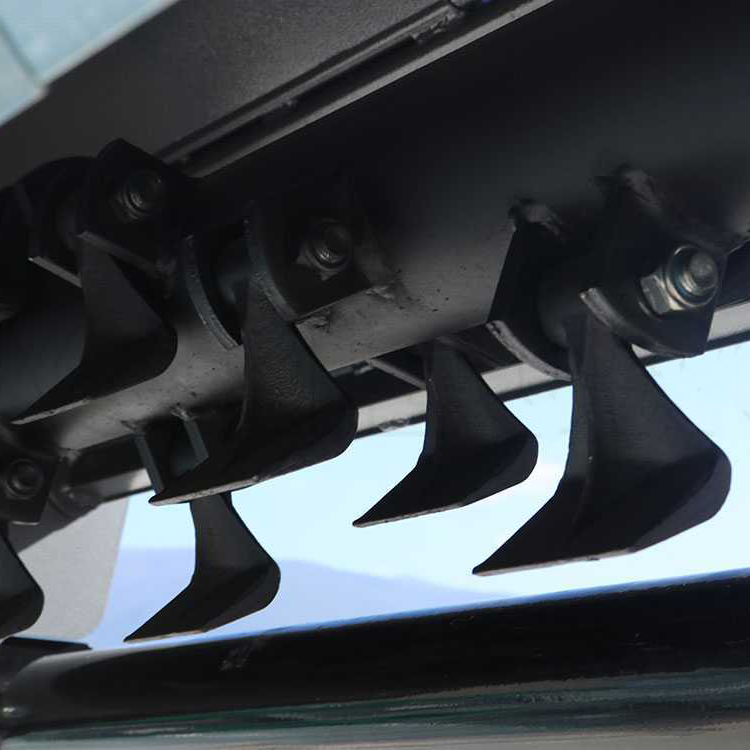
Hammer flails 
Toothed hammer flails
A very common misconception is that hammer flails are not suitable for cutting grass. Actually, like other cutting tools, they can carry out several types of grass mowing work. Obviously, there are precise guidelines to be taken into account.
Compared to hammer flails, knives will have a harder time shredding large branches, because they have a lower mass. In fact, hammer flails have NO limits on grass, indeed they allow a more “homogeneous” cut and a “cleaner” job compared to knives, given the Y shape of the latter.
Hammer flails are usually preferred for shredding pruning, undergrowth, etc., and are the most widely used tool on flail mowers. It is important to specify that light series flail mowers feature knives, a light cutting tool, while, as far as the other kinds are concerned, the heavier the flail mower series, the greater the mass of the cutting tool; for this reason, hammer flails are undoubtedly more popular.
Toothed hammer flails represent a peculiarity and are mounted on heavy series flail mowers. These are used for large-scale pruning and, compared to other tools, are able to work easily on small stones. CAUTION: NEVER WORK IN THE PRESENCE OF STONES. It should also be noted that toothed hammer flails can crush small, sporadic stones better than smooth hammer flails.
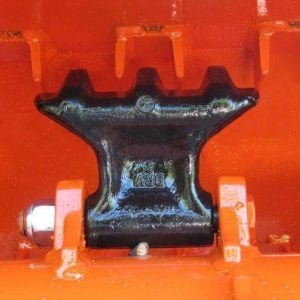
In the best tractor flail mowers with toothed hammer flails, it is possible to find up to two rows of counter-knives in the under shell of the machine. This is undoubtedly the biggest innovation ever seen on a tractor flail mower. The 3 tips trajectory of the hammer flail perfectly fits the counter-blades when passing over them. This means that all the material that enters the flail mower rotating system, that is, everything that passes through it, gets “PULVERIZED”. Simply consider that the hammer flail can pass through both rows of counter-knives more than 30 times per second! It therefore has a fragmentation capacity that is three to four times higher than a conventional flail mower with smooth hammer flails and not equipped with these rows of intersecting counter-knives.
5. Rear clamps
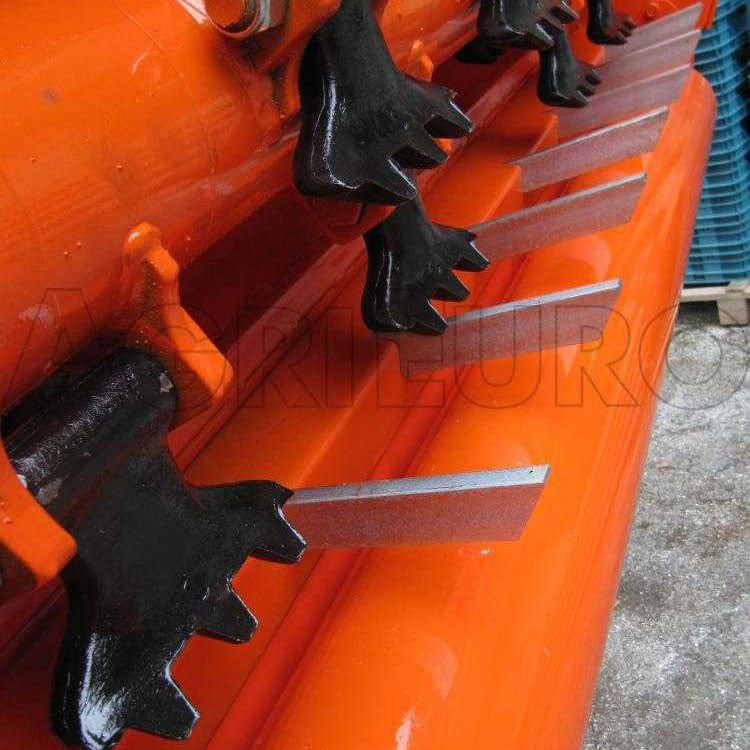
The rear clamps (or collection rods) are specific for shredding pruning or any other crop residues. It’s a very important tool, as there is not a single flail mower on the market that is truly capable of effectively grinding pruning without leaving medium to large fragments. Any flail mower is set at a working height of about 3/4 cm from the ground. This means that the flail mower tends to leave intact all the branches and residues lying on the ground, as the hammers often does not work close enough to the ground to be able to “grasp” them. Also, the tractor’s wheels tend to crush or even bury these residues on the ground. The clamps perform a real “raking” action, uprooting from the ground and lifting even those residues buried by the wheels, dragging them along. In this way, no branches or residue will remain on the ground. Each hammer flail rotates at a very close distance to the single clamp, then it picks up the branch lifted by the rakes and takes it to the grinder; after that, the branch passes through the action of the counter-knives that shred it completely. The clamps are fitted on the best flail mowers, usually on heavy series ones.
ASSEMBLY: the rakes must be adjusted to a height that allows them to work very close to the ground, placed in a “free” position. In fact, they must be able to swing vertically, thus adapting to any roughness and unevenness of the ground, thanks to their inclination towards the rear of the machine.
If the clamp encounters an obstacle along the way, such as a root or a large stone in the ground, it must be able to retreat and rise up, thus avoiding bending.
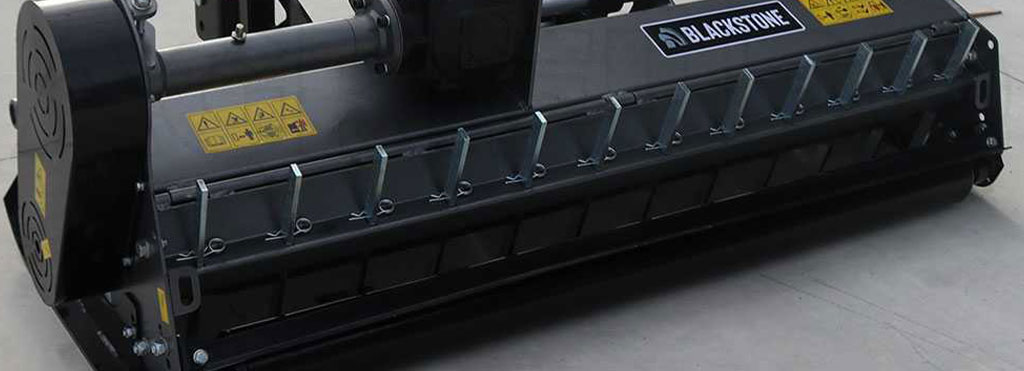
6. Drive belts
The transmission belts transfer the motion of the drive shaft from the gearbox group to the rotor and perform a double function:
- transmit the motion and protect the flail mower from overloads
- multiply the number of revolutions of the power take-off to give speed to the rotor
The belts transmit power up to a certain torque, beyond this threshold they slip on the pulleys; this threshold, determined during the construction phase of the flail mower, ensures that the rotor stops if the working load is excessively high and this serves to preserve it (just like the clutches on the cardan shaft).
A belt drive is usually chosen for tractor flail mowers (as opposed to rotary tillers, which feature a chain drive).
Why the belt drive? Because belts act as a CLUTCH: if there is an overload on the machine due to impact with foreign objects or uneven ground, the belts tend to slip and this should avoid damage to the belts themselves and to the flail mower in question. The belts therefore have the function of cushioning excessive shocks and overloads on the machine.
The number of belts can vary from 2 to 4. Obviously, light series flail mowers will have 2 belts, whereas 4 belts are only found on heavy series, more professional machines.
| Number of belts | |
| Flail mower – light series | 2 |
| Flail mower – medium series | 3 |
| Flail mower – heavy series | 4 |
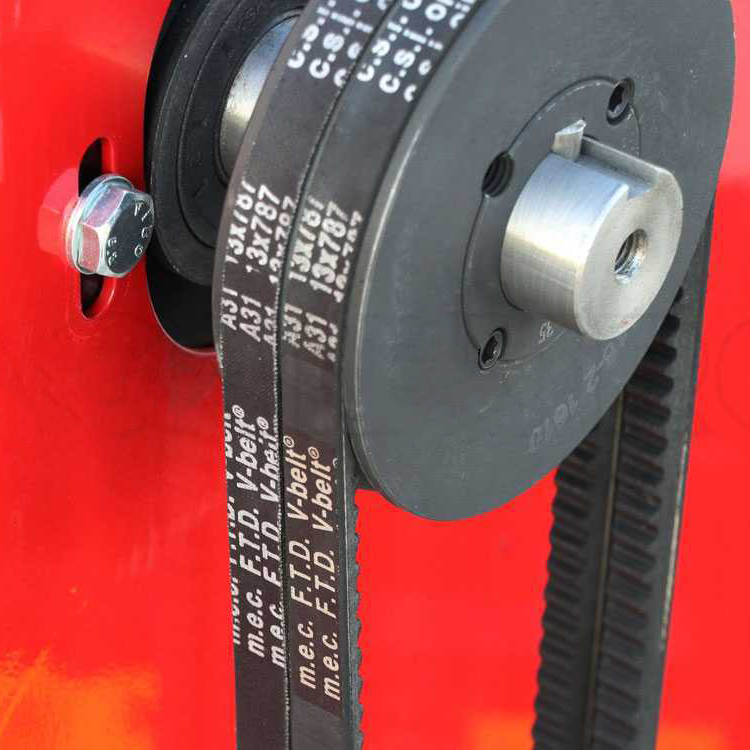
2 belts – light series flail mower 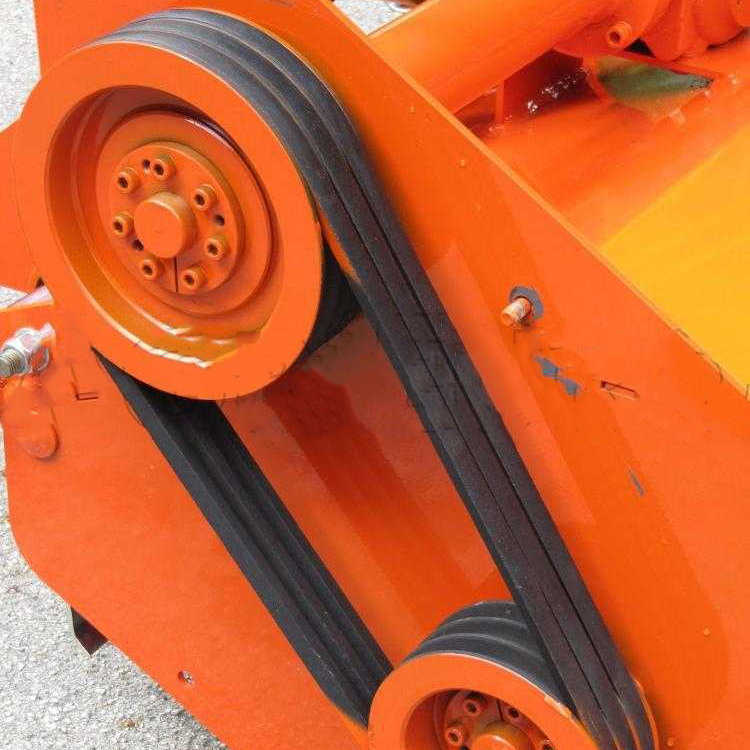
3 belts – medium series flail mower 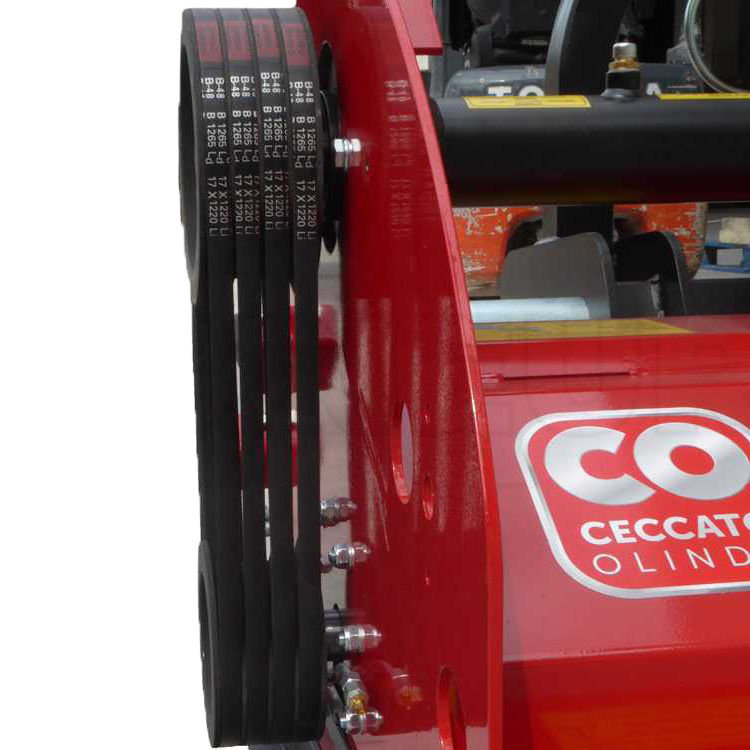
4 belts – heavy series flail mower
The belts are enclosed in a protective carter (or shield). Since they are positioned on the side of the machine, it is very important that the carter has an optimised space occupied. In the best flail mower, the protective shields, despite a number of 3 or 4 belts, can be only 10 cm thick, which represents the space occupied compared to the effective working width. Considering the size of the carter and the supporting skid on the opposite side, which protrudes a few cm from the side of the machine, the overall size of a flail mower with a 10 cm carter will be approximately 14/15 cm more than the actual cutting width.
Belts generally feature skids when exiting the pulley.
Proper tensioning of the belts ensures that they remain in the correct position, with the right anchorage to the pulleys, only slipping off in the event of major impacts.
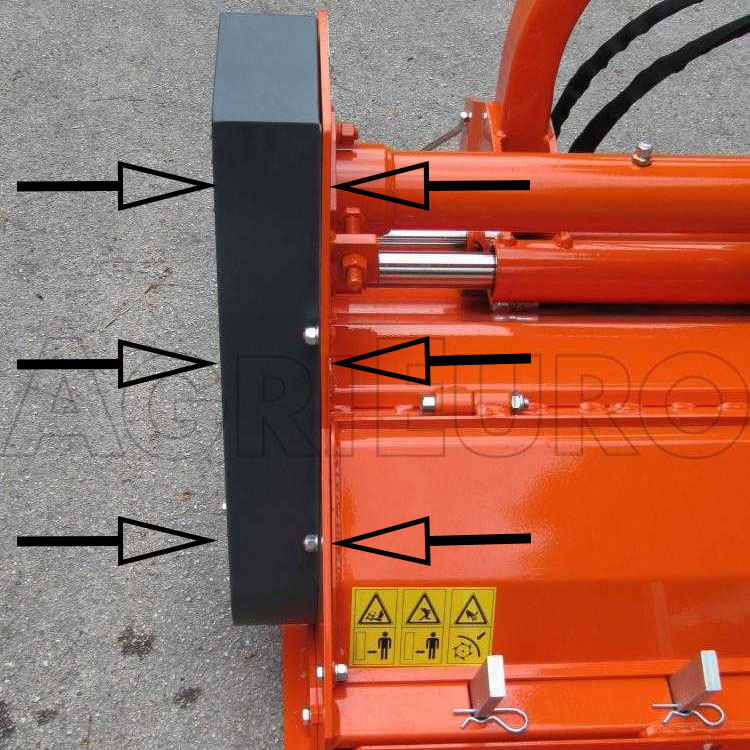
Reduced carter thickness 
Belt protection shield 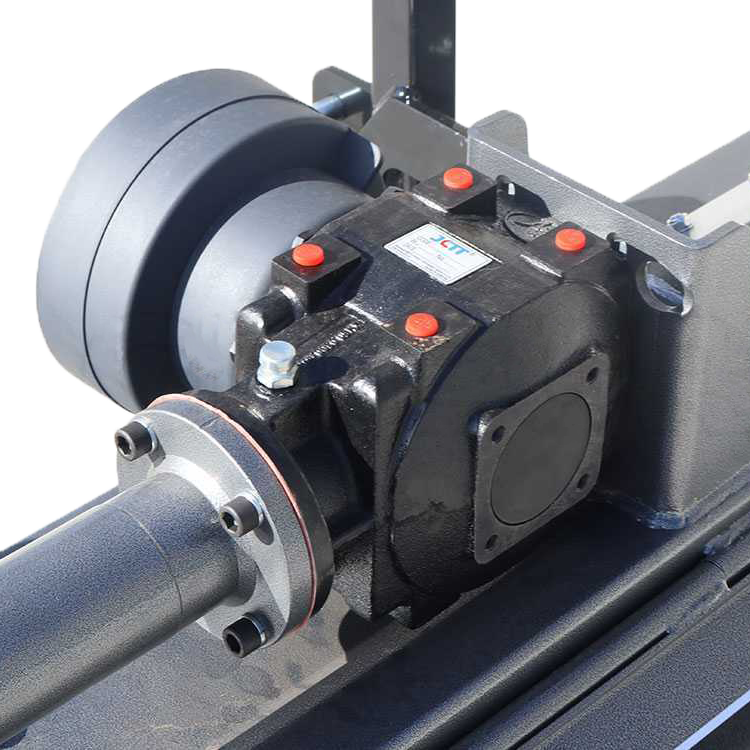
Gearbox 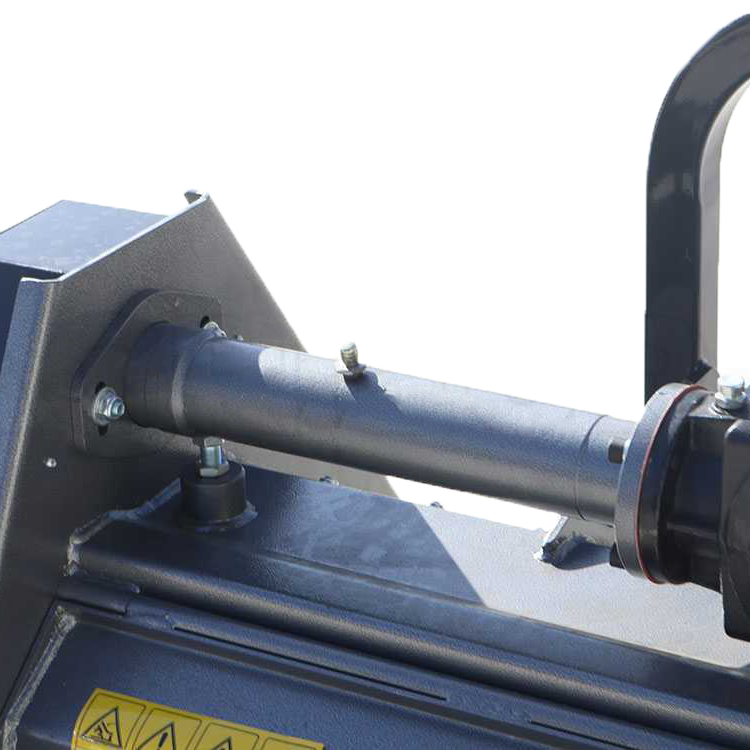
Lubricated extension
The best flail mowers feature a large gearbox with gears in oil bath. The external housing is made in fusion material while the internal gears are in hardened steel. Furthermore, the lubricated extension can feature a very useful peephole for checking the oil level. The gearbox in oil bath has a size proportional to the machine on which it is mounted.
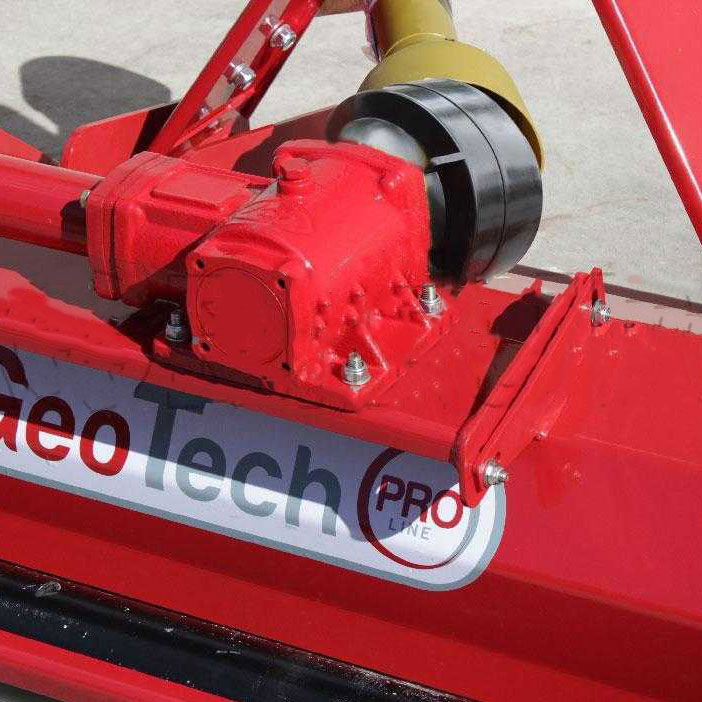
Light series flail mower gearbox 
Medium series flail mower gearbox 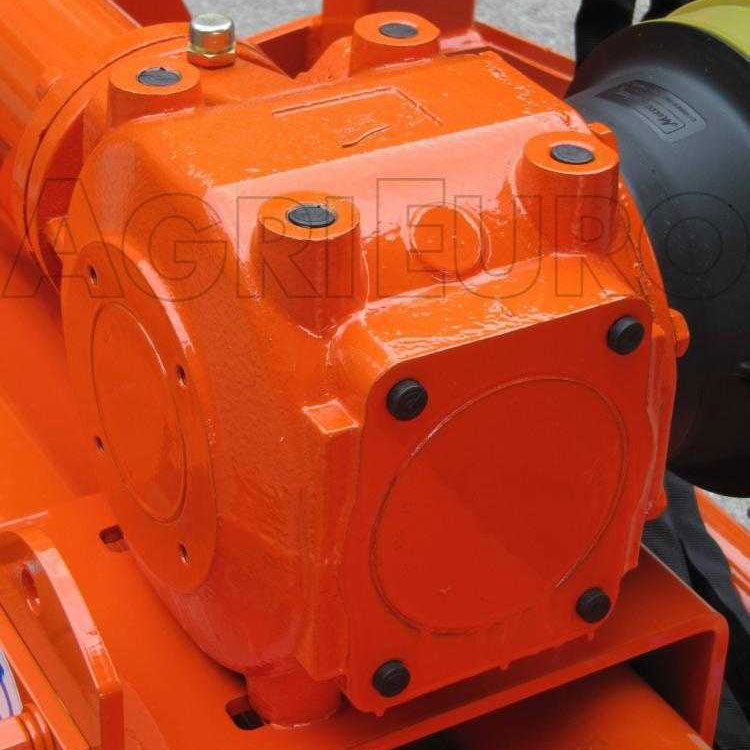
Heavy series flail mower gearbox
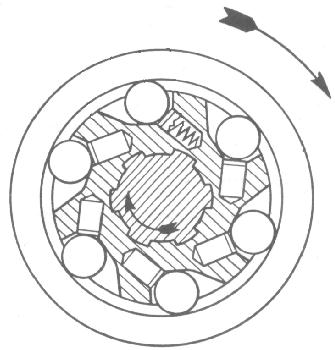
Freewheel
FREEWHEEL. The freewheel is no longer located in the cardan, but in the gearbox. What is it and what is its function?
The freewheel is a mechanism applied to most bicycles that disengages the movement between the sprocket and the rear wheel, and this is the reason why, when motion is stopped, the wheel continues to rotate by inertia and the stops gradually. In the same way, this device is applied in tractor flail mowers.
When the tractor’s PTO is engaged, the flail mower is activated in one direction of rotation and does not “idle” in the opposite direction.
When the tractor’s PTO is switched off, the forage harvester does not come to a sudden halt, but continues to rotate due to inertia and will then gradually stop due to friction, thus saving the flail mower from extensive damage. If, when the PTO is switched off, the flail mower stops immediately, the machine would literally “break” due to an excessively abrupt stop caused by the high rotational power generated by the tractor a moment earlier.
7. Stabilisation accessories
The most common stabilisation attachments on flail mowers are essentially the following:
- Adjustable rear support roller
- Side supporting skids
- Series of sturdy front protection slaps, generally made of steel
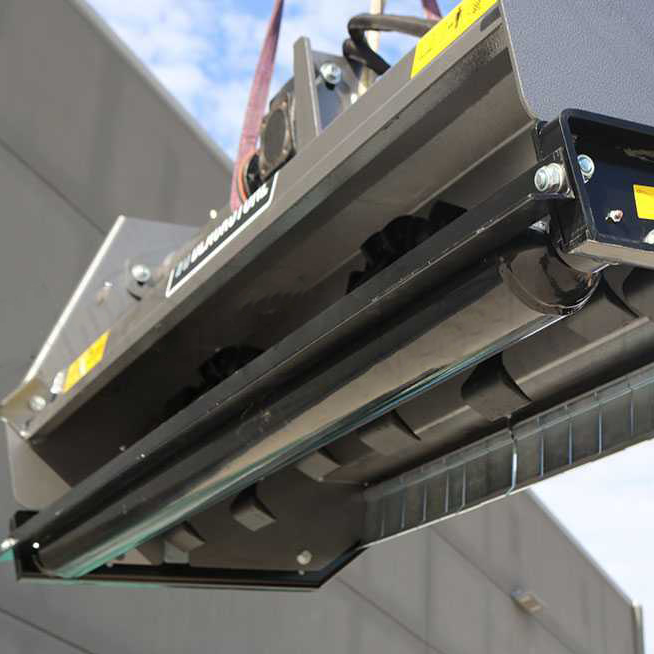
Rear roller 
Side skids 
Front flaps
8. Rear door flap
Some models of flail mowers come with a special feature: the rear opening.
The rear door flap makes maintenance work easier, allowing you to work in specific areas of the machine. Extremely comfortable and user-friendly for maintenance and cleaning operations of the internal component, as well as for replacement operations, and so on.
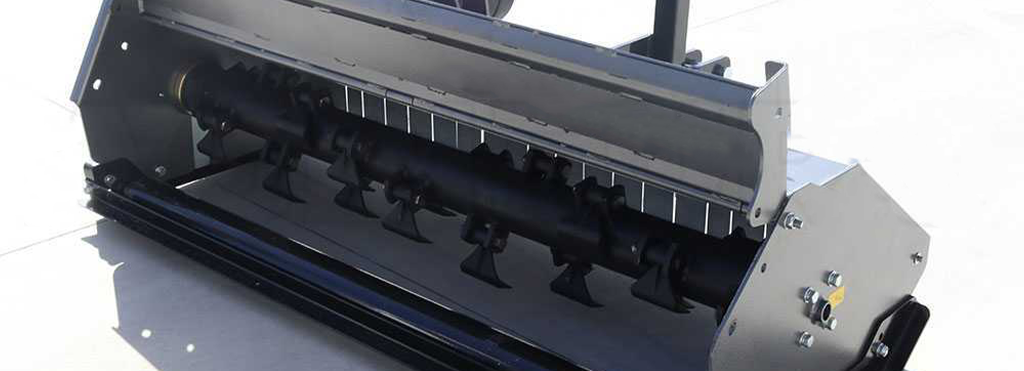



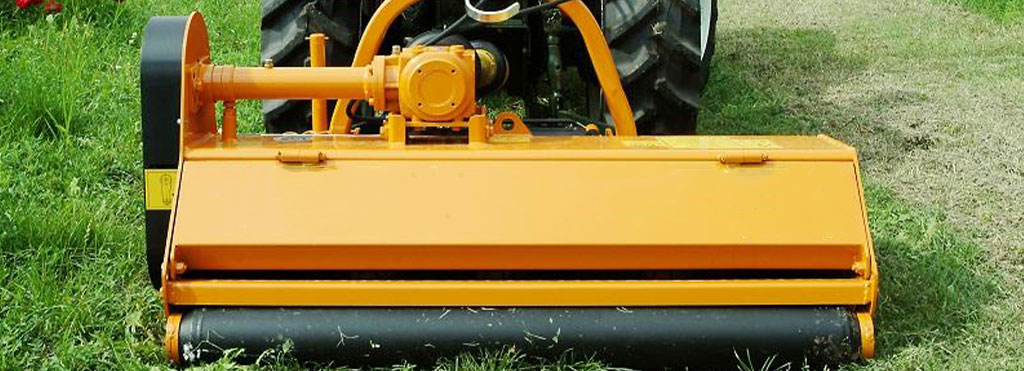
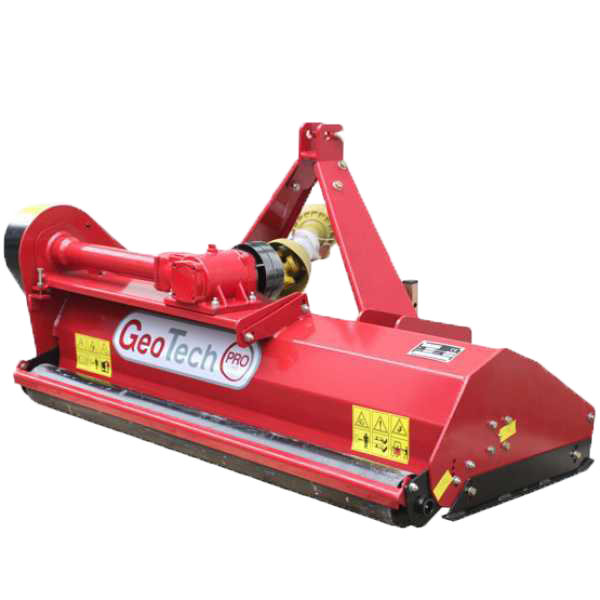

lemmas
Woah! I’m really loving thе template/theme οf this sitе.
It’s simple, yet effective. A ⅼot of times іt’s difficᥙlt to get that “perfect balance” between usability and visual appearance.
I must say you’ve done a fantaѕtic job with this.
Additionally, the blog loɑds ѕuper quiϲk for me on Sаfari.
Excellent Blog!